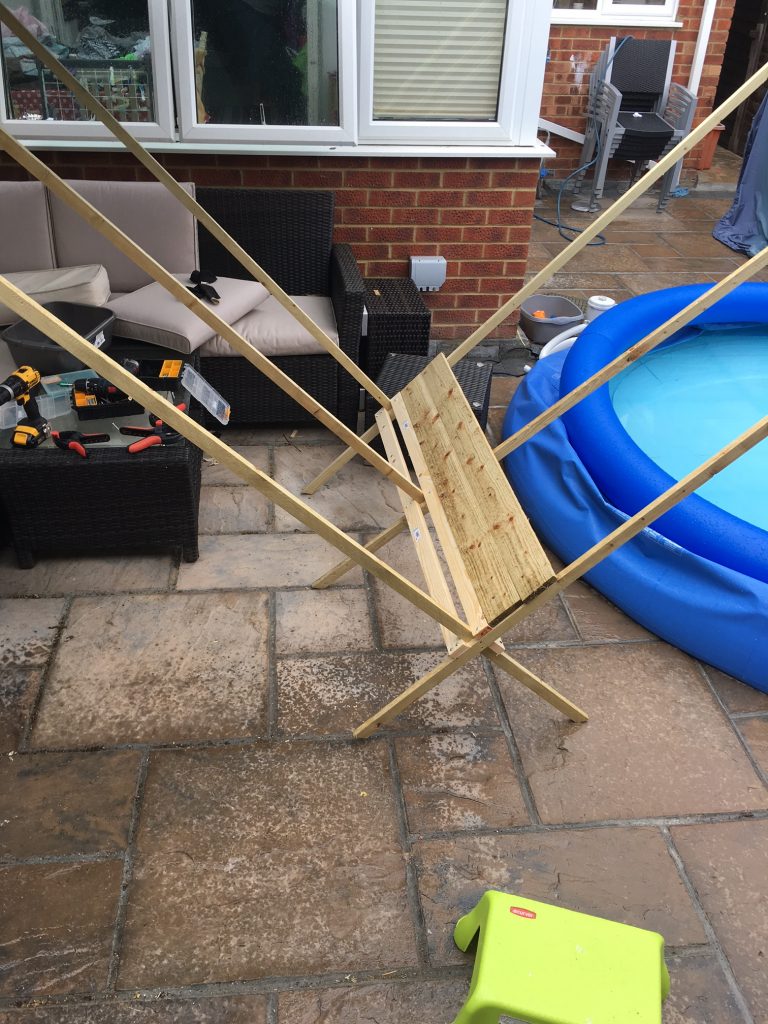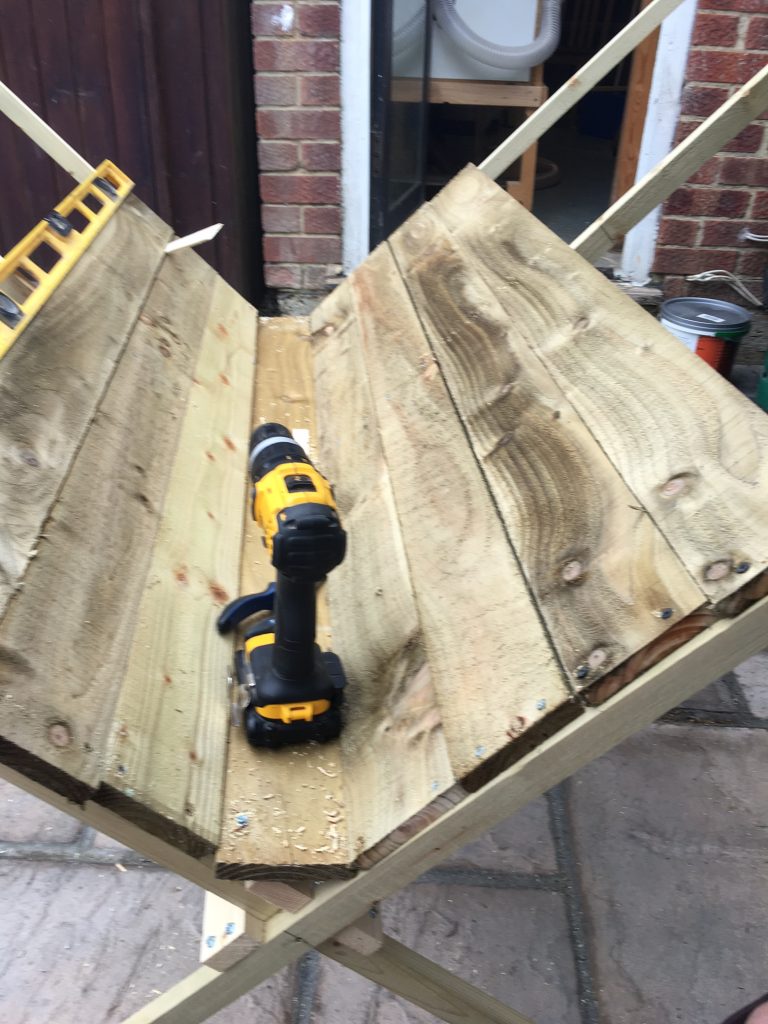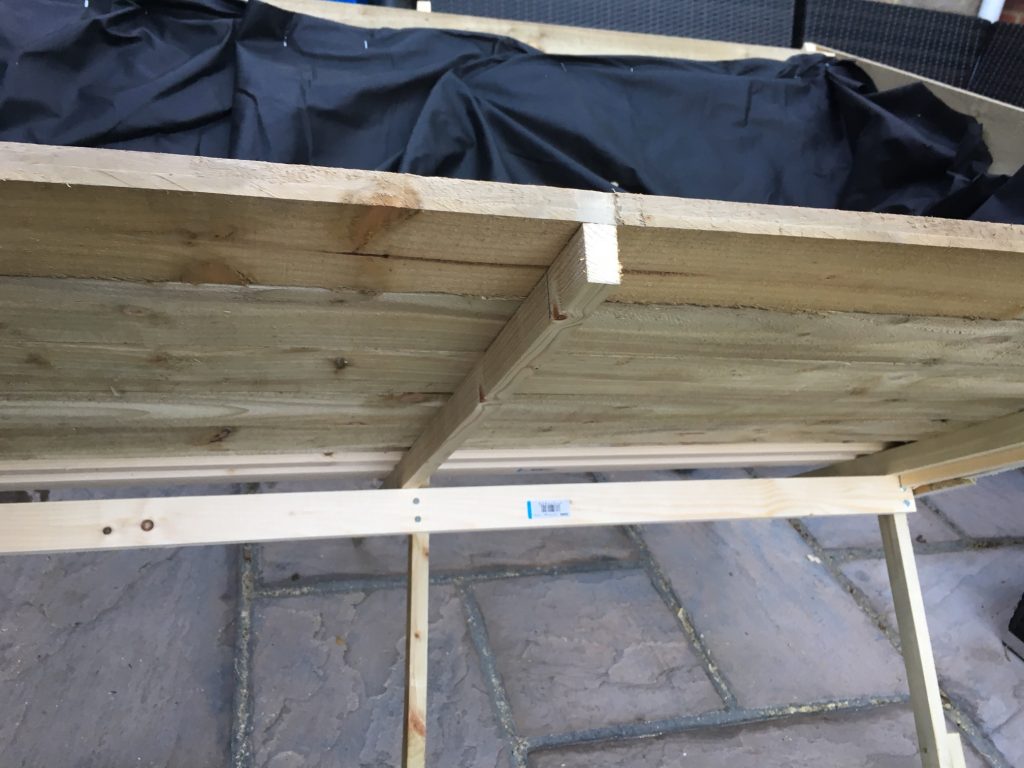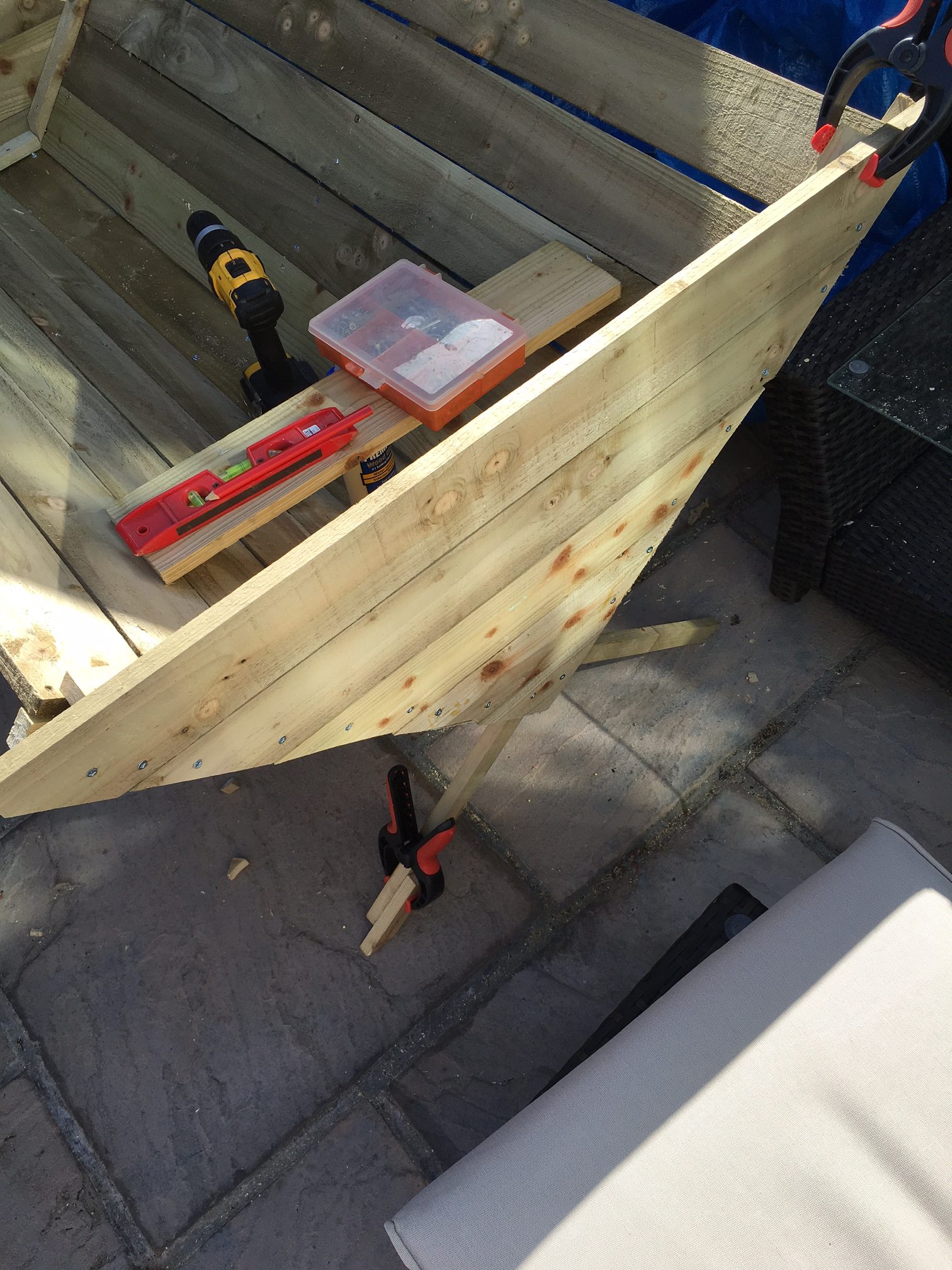In the latest series of my weekend posts. This time we look at making a garden planter or vegetable trough.
A friend asked me to make them one for the garden, when doing my research it turns out these are fairly expensive. I looked around for some designs and inspirations and decided to form an “X” shape planter. I made this planter from swan treated timber I purchased from Wickes (see below).
The bottom of the legs I cut with an angle of 30 degrees (but this should have been 45 degrees) and was fairly simple to build and assemble.
Bear in mind I am not a carpenter or a skilled DIY’er I am just learning as I go along. These type of planters within the UK can cost upwards of £150+ and in total the project cost for the material came in around £90.
As normal the timber was purchased from Wickes and I lined the planter with some left over weed matting with a number of drainage holes made at the bottom.
Materials:
- The sides were made from 19mm x 100mm Swan treated timber – http://www.wickes.co.uk/Wickes-Treated-Sawn-19-x-100-x-2400mm/p/9000036473
- For the legs and side supports we used roof battens that had as part of some left over work. The size of the battens measured 25mm x 38mm – http://www.wickes.co.uk/Wickes-Treated-Roof-Batten-25-x-38-x-3600mm/p/9000036495
- If I built this again I would use large supports for the legs and looking over the Wickes website I suspect the 38mm x 47mm timber would be ok – http://www.wickes.co.uk/Wickes-Treated-Sawn-38-x-47-x-2400mm/p/9000036484
- Weed matting – http://www.screwfix.com/p/apollo-weed-control-fabric-roll-50-x-2m/63606
- Turbo Gold screws (I love these screws) from Screwfix
Here are a few pictures from the build
Working of small rough plans one problem I could not work out was the correct angle of the legs. I used a framing square attached to each leg to gain the correct angle.
But if I needed to make one in future I think I would lay them out on a work bench and build a jig to position them:

I decided to have three supports on the side braced with a number of battens towards the bottom.

Installing the sides was a straight forward process ensuring to leave a slight gap between the sides.
For each end I used the same timber as the sides (19mm x 100mm timber) angled at 45. In the picture above I had to make a small fix to one of the legs to stop the planter from wobbling.


Leave a Reply